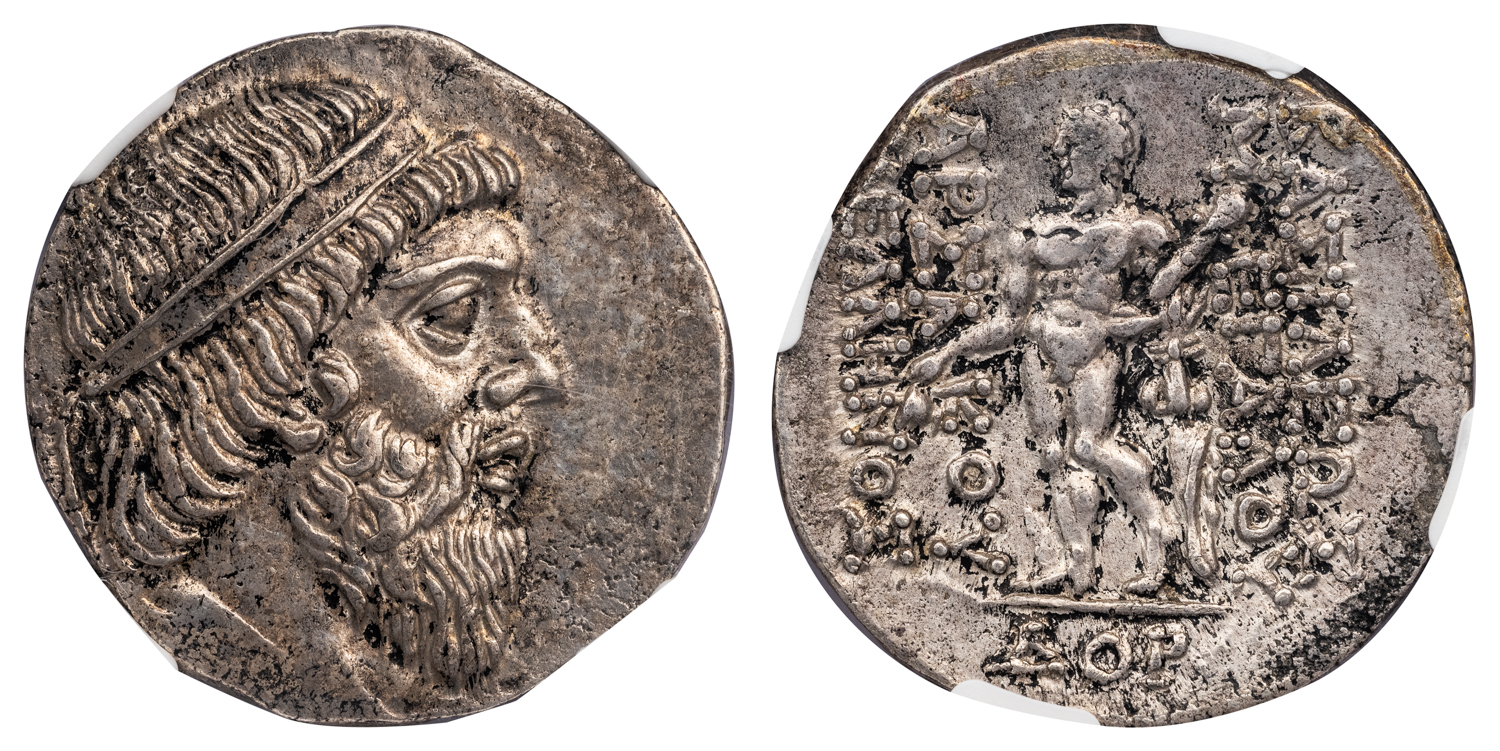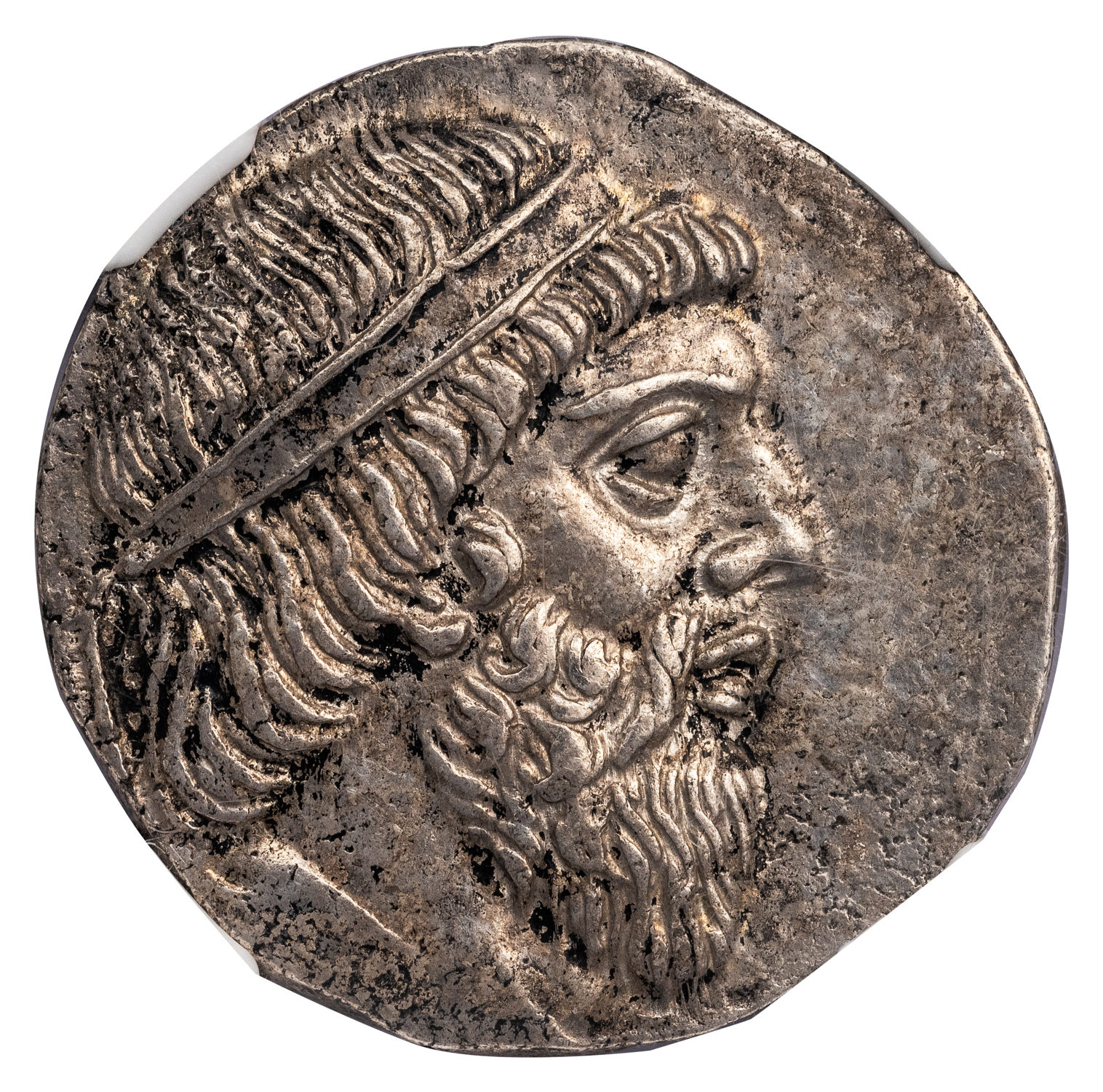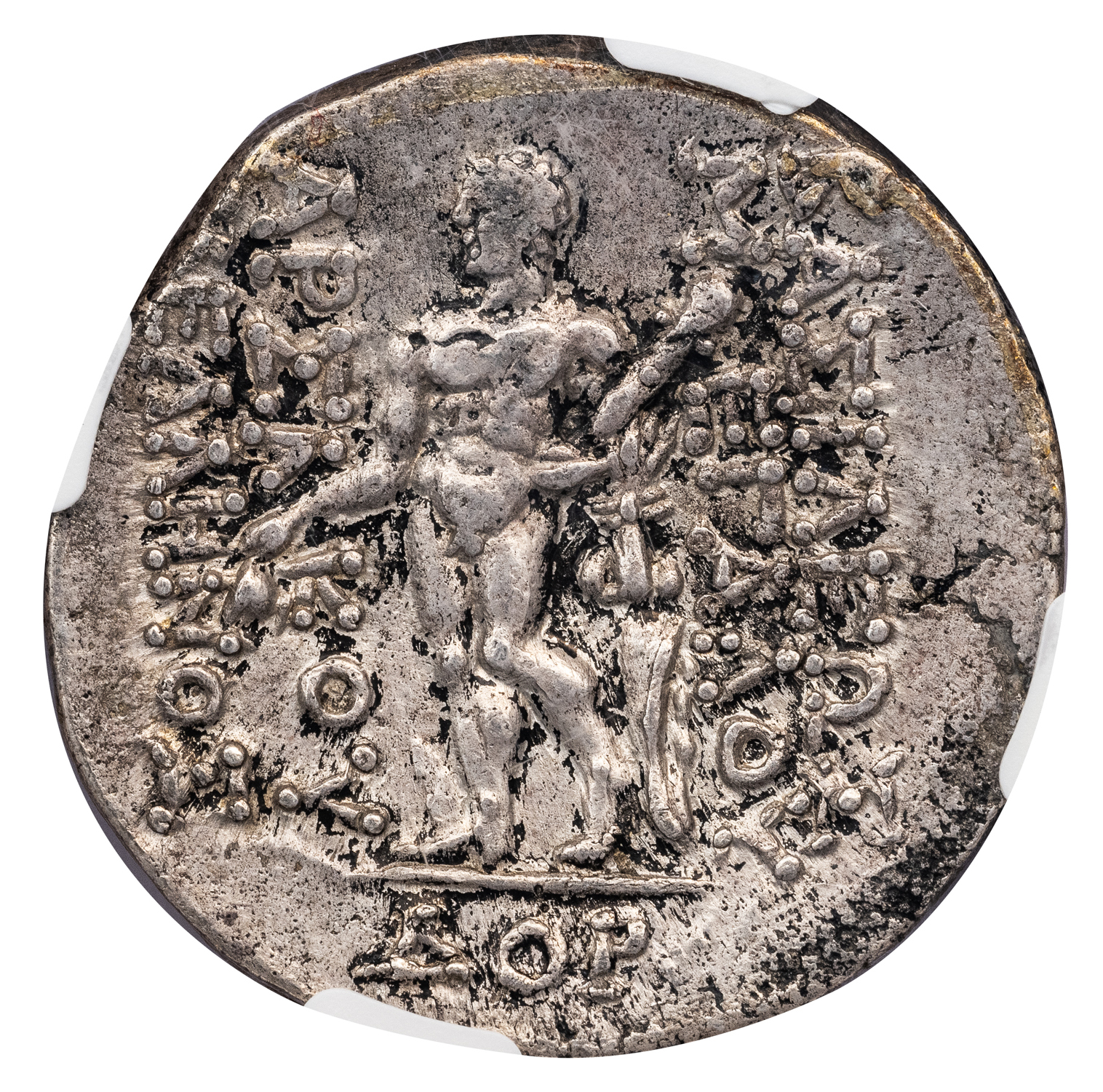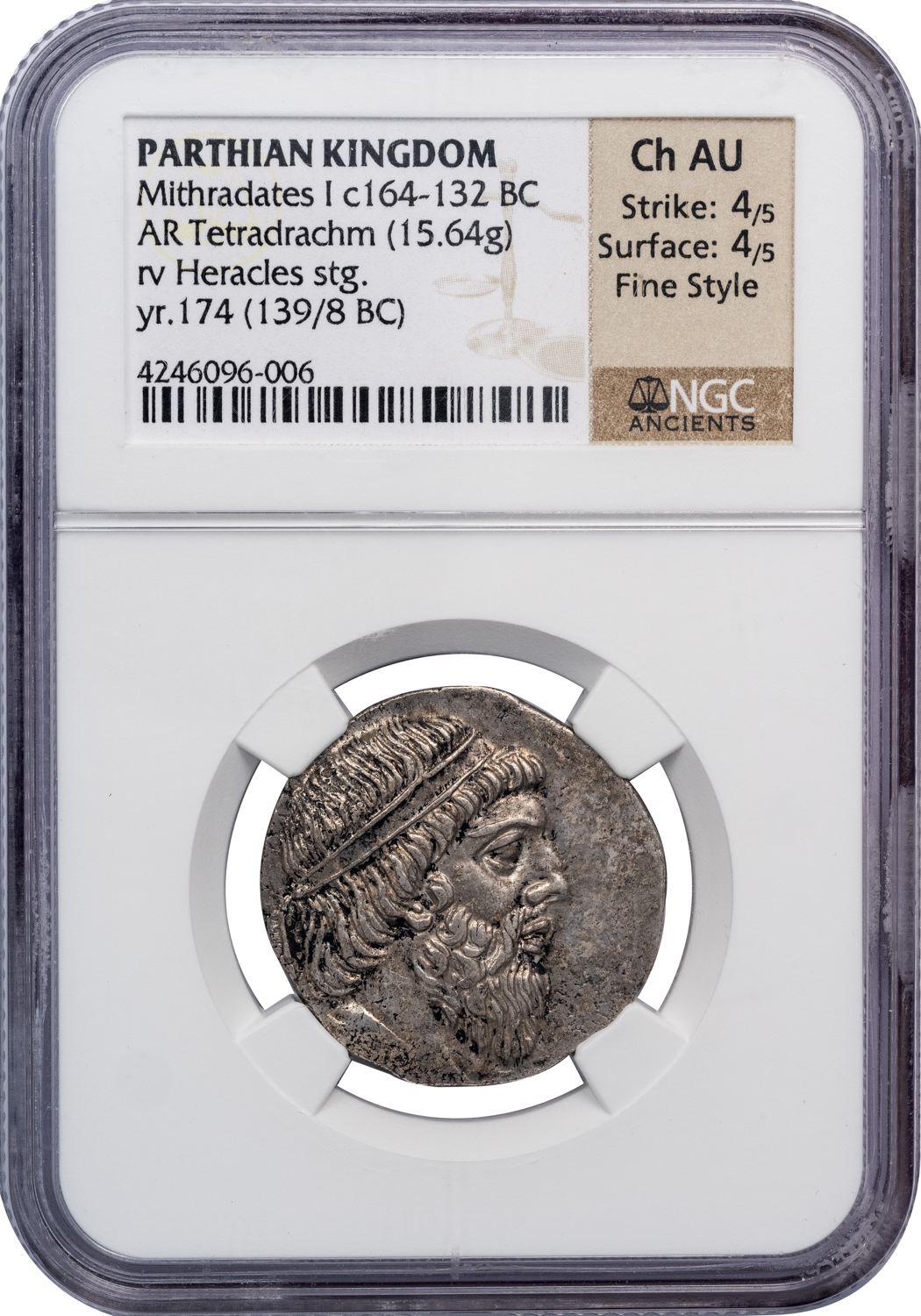MITHRADATES I SILVER TETRADRACHM – YEAR 174 (139/8 BC) ISSUE FROM SELEUCIA ON THE TIGRIS – CHOICE AU FINE STYLE NGC GRADED PARTHIAN COIN (Inv. 19767)
19767. PARTHIAN KINGDOM. MITHRADATES I, ca. 164–132 BC.
Silver Tetradrachm, 15.64 g, 26 mm. Issue of Seleucia on the Tigris year 174 (139/8 BC).
Obv. Diademed and bearded bust of Mithradates I. Rev. BAΣIΛEΩΣ / MEΓAΛOY / APΣAKOY / ΦIΛEΛΛHNOΣ, Heracles standing left, holding cup, lion skin and club; ΔΟΡ (date) in exergue.
Selwood 13.10; Shore 39.
Ex Heritage 3044, 1/3/2016, lot 30047.
NGC graded CHOICE AU, Strike 4/5, Surface 4/5, FINE STYLE, with a magnificent portrait of the founder of the Parthian kingdom. The current NGC census shows this to be one of two best graded pieces (in CH AU), with none higher.
Mithradates I was the true architect of the Parthian Empire. After assuming the diadem in ca. 165 BC, he immediately set about taking advantage of the weaknesses of neighboring kingdoms to expand the territory under his control. By 155 BC, Mithradates I had detached Aria, Margiana, and parts of western Bactria from the Graeco–Bactrian kingdom of Eucratides I, and in 148/7 BC he conquered the increasingly unstable Seleucid satrapy of Media. From the Median city of Ecbatana, he marched into Babylonia in 141 BC, conquering the great eastern Seleucid capital at Seleucia on the Tigris. This event sent shockwaves through the Seleucid Empire, but ongoing civil war prevented an immediate response. Only in 139/8 BC, the year that this tetradrachm was struck for Mithradates I at Seleucia, did the Seleucid king, Demetrius II Nicator, march east to challenge the Parthian king. Although Demetrius enjoyed some initial successes, Mithradates I ultimately defeated and captured him in July/August 138 BC. The Parthian victor then held him as an honored hostage in Hyrcania. The Heracles type on this coin may advertise to the great strength shown by the Parthian king in his defeat of Demetrius II while at the same time the use of a date calculated according to the Seleucid Era suggests Mithradates’ desire to be seen as a successor of the Seleucids—a desire also implied by his own daughter Rhodogune to Demetrius II.




